
85+ Crucial Customer Service Statistics in 2025
By Uttam Kumar Dash
September 18, 2024
Last Modified: December 20, 2024
Customer service is a critical factor in driving business success, as evidenced by various data points. The statistics mentioned below reveal clear patterns and insights that can guide us in refining our approach to customer service.
Here’s what you need to know about the latest trends, insights, and customer service stats to wow your customers in 2025 and beyond.
Customer Service Stats

89% of customers are more likely to buy again after a good customer service experience. (Salesforce Research)
78% of consumers will do business with a company again after a mistake if their customer service is excellent. (Salesforce Research)
A good customer service experience strongly influences recommendations. Consumers who rate a company’s service as “good” are 38% more likely to recommend it. (Qualtrics XM Institute)
Nearly three out of five consumers say good customer service is key to feeling loyal to a brand. (Zendesk)
Businesses can grow revenues by 4% to 8% more than their competitors when they focus on better customer service. A great experience builds stronger loyalty, turning customers into promoters worth 6 to 14 times more than unhappy customers. (Bain & Company)
Over 70% of customers expect companies to collaborate within teams on behalf of them. 68% get annoyed when their call is passed between departments. (Zendesk)
Almost 90% of customers trust a company with “very good” service. But only 16% trust companies with “poor” service the same way. (Qualtrics XM Institute)
A customer is four times more likely to switch to a competitor if their problem is related to bad service. (Bain and Company)

56% of customers are okay with sharing their personal information if it means getting better service. (Salesforce)
On average, customer service agents ask for a customer’s name only 21% of the time. (Glance)

50% of customers say they do share their good or bad service experiences on social media. (CFI Group)
Nearly 60% of customers find long holds and wait times to be the most frustrating parts of a service experience. (Zendesk)

27% of Americans say that “lack of effectiveness” is their biggest frustration with customer service reps. (Statista)
72% of customers say having to explain their problems to multiple people is poor customer service. (Dimensional Research)

79% of consumers who used online feedback to complain about a poor customer experience were ignored. (Harris Interactive)
84% of customers say their expectations were not exceeded in their last interaction with customer service. (Harvard Business Review)
79% of consumers had a valuable experience in an online chat with a customer service rep. Additionally, 75% found value in interacting with other customers in a brand’s online community, and 67% found value in messaging a brand through their mobile app. (Khoros)

75% of consumers prefer an authentic human voice over a perfectly crafted brand message. (Khoros)
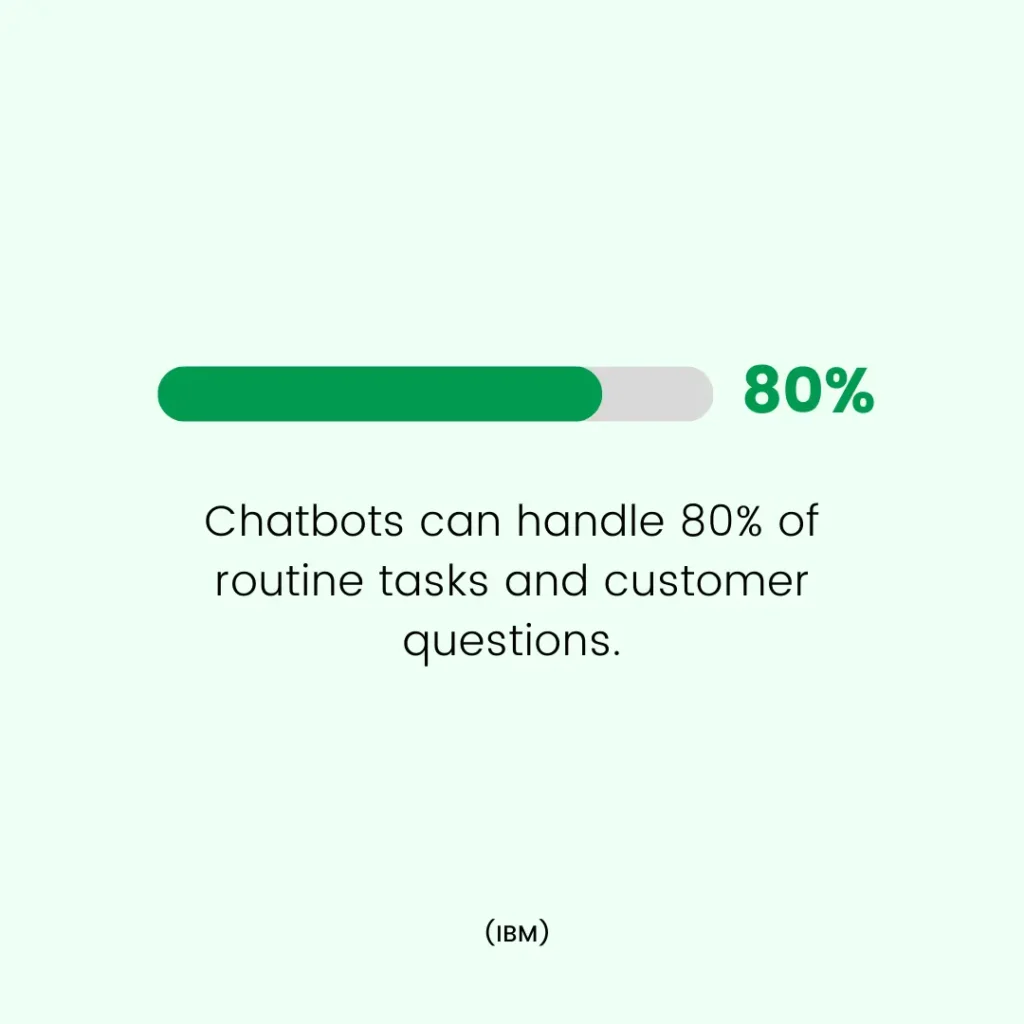
Chatbots can handle 80% of routine tasks and customer questions. (IBM)
Improving self-service is a top priority for 64% of customer service leaders across major industries in 2024. (Gartner)

Teams that are very connected see a 21% increase in profitability. (GoRemotely)
73% of customers fall in love with a brand because of friendly customer service representatives. (RightNow Technologies)
75% of customers say they’ve recommended a company because of excellent customer service. (Salesforce Research)
42% of companies provide customer service via email, 41% via social media, and 38% via phone calls. (HubSpot, State of Customer Service)
21% of customer service reps find it hard to keep up with growing customer expectations. (HubSpot, State of Customer Service)

28.6% of customer service pros say the best metrics to track are KPIs like customer satisfaction score, customer retention, average response time, average resolution time, and customer lifetime value. (HubSpot, State of Customer Service)

68% of customer service leaders say they use a CRM for their customer service operations. (HubSpot, State of Customer Service)
When choosing customer experience software, 44% of customer service reps want to improve the customer experience, and 40% want to boost communication and teamwork between teams. (HubSpot, State of Customer Service)


80% of consumers expect brands to do more than just provide good customer service. They want brands to support good causes and address societal challenges. (Edelman)
Consumers are 5.1 times more likely to recommend a brand after an excellent customer service experience. They are also 3.5 times more likely to buy from a business after positive customer experiences. (Qualtrics)
More than two-thirds of customers (68%) expect brands to show empathy in their communication channels. (Salesforce)
42% of consumers would pay more for a friendly and welcoming customer service experience. (PwC)

About half (49%) of customers’ social media complaints go unanswered by businesses. (ASU)
17% of consumers are likely to tell their friends and neighbors about a bad customer service experience. (CCMC)

56% of customers say they have to repeat or re-explain information to different representatives. (Salesforce Research)
75% of customers expect brands to offer 24/7 customer service. (Document360)
96% of customers say customer service is important for their loyalty to a brand. (Microsoft)
12% of customers feel very frustrated if their previous conversations with the brand aren’t considered during their current customer service call. (Document360)

10% of customers feel disappointed with a brand if their preferred communication channel isn’t offered. (Document360)
53% of shoppers believe their feedback doesn’t reach anyone who can actually do something about it. (Microsoft)
Find, store and access customer feedbacks
all in one system.
56% of customers say a brand’s customer service often doesn’t match the image they project. (Freshworks)
20-33% of consumers rated their provider’s digital service offerings as “needing improvement” to “horrible.” (Airkit)
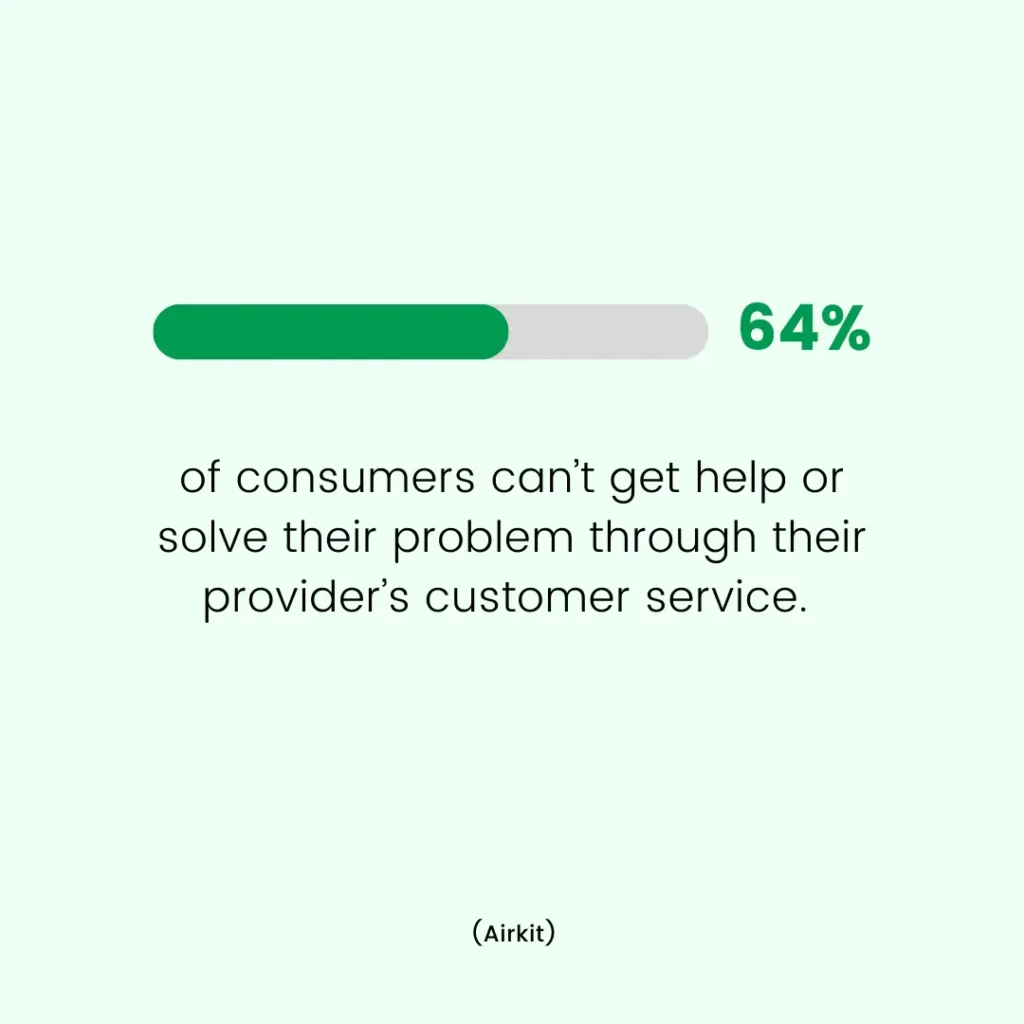
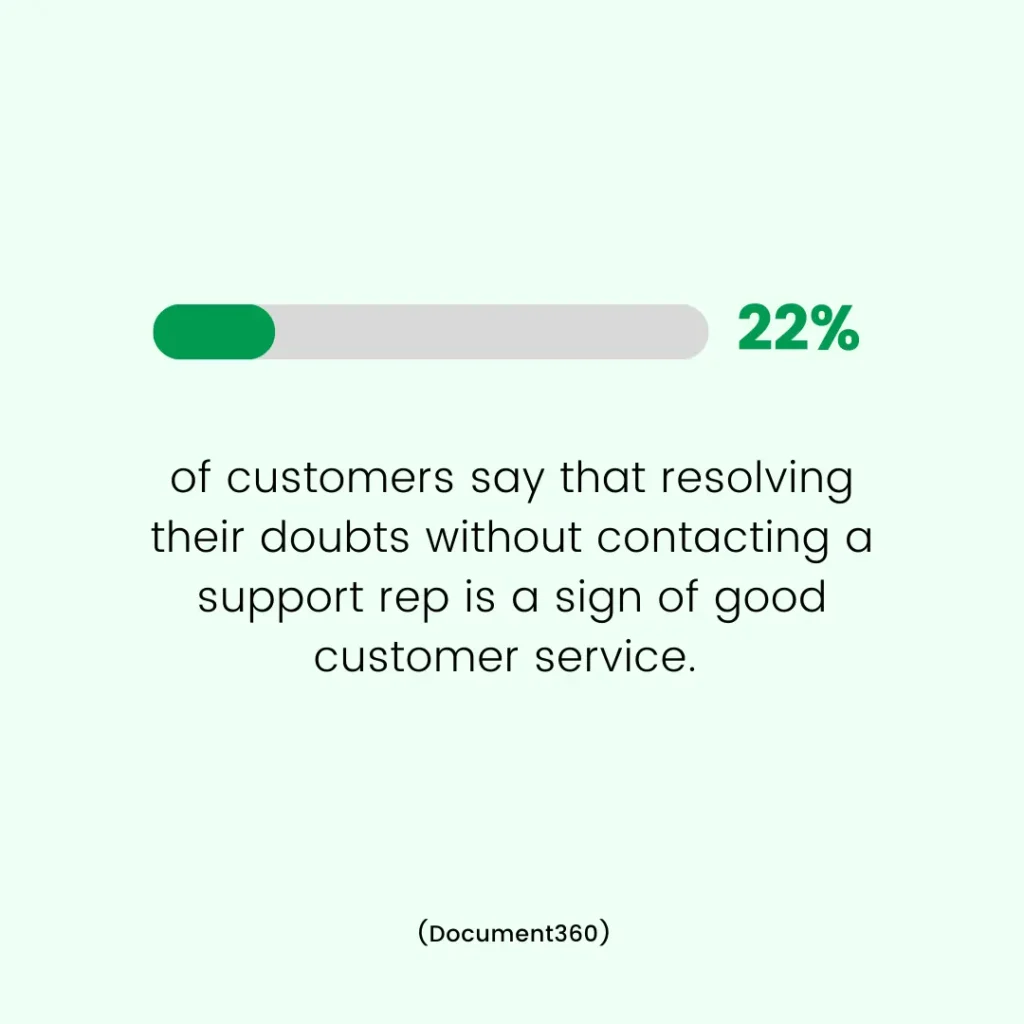
22% of customers say that resolving their doubts without contacting a support rep is a sign of good customer service. (Document360)
66% of US consumers say that valuing their time is the most important thing a company can do for good online customer service. (Forrester)

22% of customers believe that self-service knowledge base articles help them get answers faster than other channels. (Document360)
88% of customers expect companies to provide an online self-service portal. (Statista)
92% of customers say they would use a knowledge base, and 83% would use a community forum for self-service support if available. (Vanilla Forums)
63% of consumers expect customer service agents to understand their unique needs and expectations. (Salesforce)

80% of consumers expect brands to do more than just provide good customer service; they want brands to give money to good causes and address societal challenges. (Edelman)
62% of Millennials look for unofficial knowledge bases, like subreddits, Twitter, or YouTube videos, for self-service options, even when 24/7 customer support is available. (Gartner)
63% of respondents prefer a customer callback solution over waiting on hold. (Customers that Sticks)
87% of customer service representatives say customers have used digital channels like social media more during the pandemic. (Salesforce)
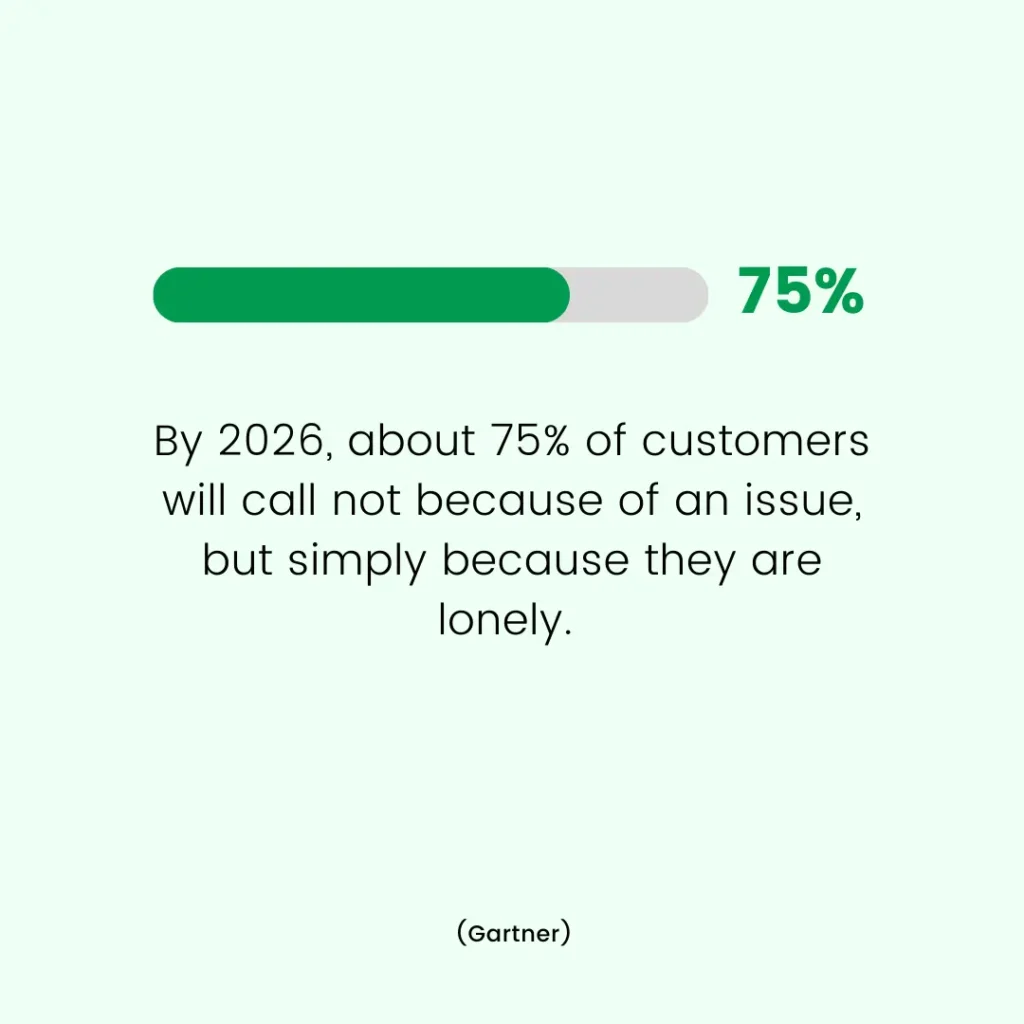
88% of consumers are influenced by online customer service reviews when deciding what to buy. (Dimensional Search)
68% of consumers say that a brand’s perception improves when companies send proactive customer service notifications. (Microsoft)
After a bad customer service experience, 39% of customers will avoid a company for at least two years. (Dimensional Research)
69% of online adults in the US shop more with retailers that provide consistent customer service both online and offline. (Forrester)
Globally, companies answer 85% of customer service questions. (Microsoft)
52% of consumers say they have made an extra purchase from a company after having a positive customer service experience. (Dimensional Research)
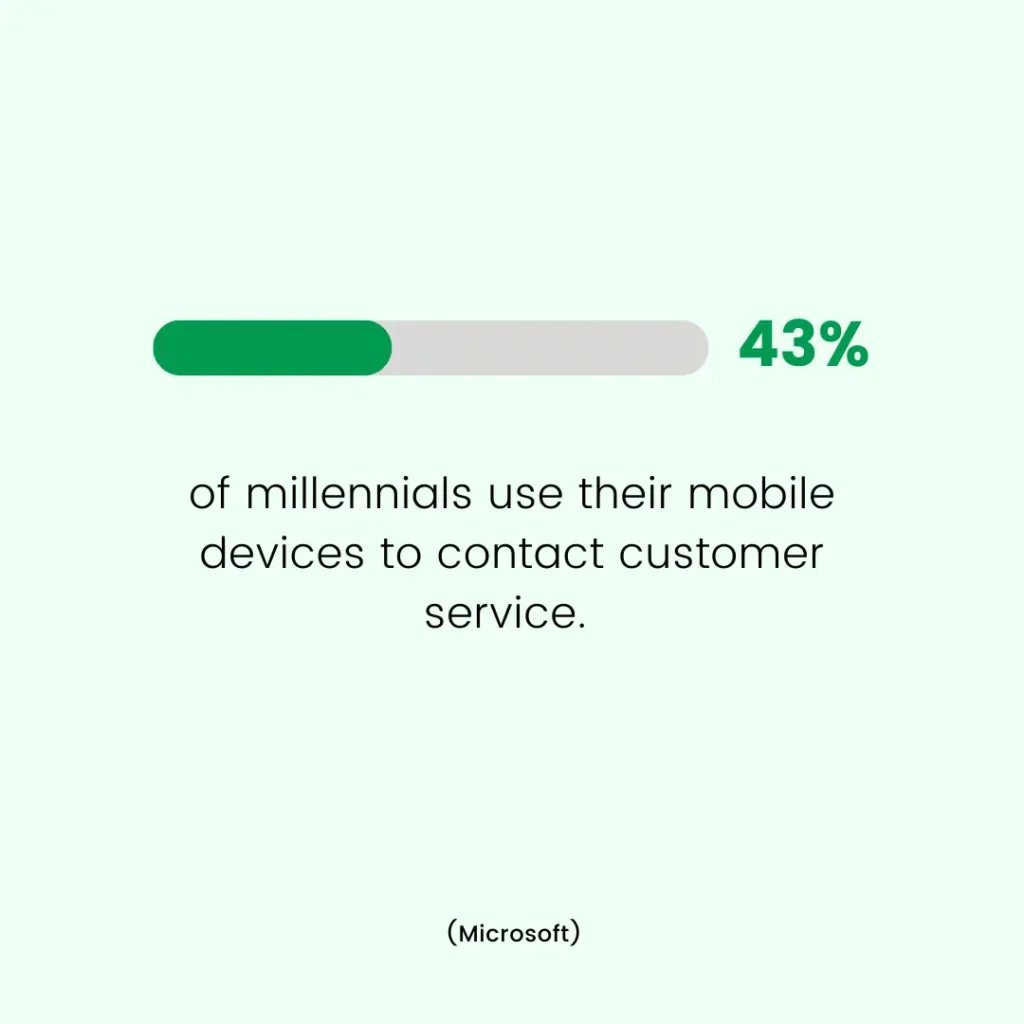
12% of USA based customers say they can’t find the information they need in self-service portals. (Microsoft)
Leveraging stat reports to strengthen customer service strategies
Here’s what we can learn from the data and how we can implement these lessons to make our business stronger.
Customer service as a growth driver
Customer service statistics show that exceptional customer service significantly impacts customer loyalty and repeat customer rates. When customers receive good service (no matter which channel it is), they are more likely to return and even recommend the brand to others.
This indicates that investing in customer service isn’t just about addressing complaints—it’s a growth strategy. Prioritizing customer service can lead to higher customer retention rates, which directly impacts revenue growth.
Focus areas for improvement
1. Consistency and efficiency
Customers expect consistency across all touchpoints. If a company can deliver a seamless, efficient experience every time, it can significantly increase customer satisfaction.
Data suggests that inconsistencies in service lead to frustration and dissatisfaction. Therefore, training our teams to maintain a high level of service across all channels/platforms is crucial.
For example, Zappos, the online shoe and clothing retailer, is well-known for its exceptional customer service. They consistently train their employees to go above and beyond for customers, whether through phone, email, or social media.
This dedication to consistent service across all channels has earned them a loyal customer base. Many customers return due to the positive experiences they’ve had with Zappos representatives, no matter how they reached out.
Another key aspect is to, reduce the wait times/backlogs. A business must ensure that issues are resolved quickly. This can totally improve customer perceptions.
2. Personalization and responsiveness
Customers value personalized service. They appreciate when their previous interactions are acknowledged, and their issues are resolved without having to repeat themselves.
Data indicates that a lack of personalization and responsiveness leads to customer frustration and, ultimately, churn.
To address this, we can leverage customer relationship management (CRM) tools to provide our agents with the full context of a customer’s history.
Most of the customers are frustrated when they have to repeat their information to different agents. However, companies that use CRM tools effectively can reduce this frustration by up to 30%, leading to a great decrease in customer churn.
This highlights how personalization like accessing complete customer history can directly impact customer retention and satisfaction.
3. Proactive service improvements
Statistics reveal that businesses often fail to meet customer expectations, leading to lost opportunities. To prevent this, we should regularly gather and analyze customer feedback, identifying areas where our service falls short.
Suppose, a popular restaurant chain started using real-time customer feedback to fix problems quickly. This approach could potentially help them improve their service. Therefore, they may see a big increase in customer happiness.
By proactively addressing the issues, we can exceed customer expectations and turn potential detractors into promoters.
Implementing data-driven changes
1. Training and development
Data shows that well-trained agents are more effective in delivering excellent customer service. By investing in ongoing training programs, we can ensure our team is equipped with the skills and knowledge they need to handle a wide range of customer issues.
This not only improves service quality but also increases agent experience and job satisfaction.
2. Technology integration
Automating routine tasks and improving self-service options can lead to faster issue resolution. However, the data also highlights the importance of maintaining a human touch, especially in complex situations.
A balanced approach, where automation handles simple inquiries and human agents manage more nuanced interactions, can optimize the customer experience.
3. Enhancing communication
Effective communication is key to resolving customer queries quickly and effectively. The data suggests that customers expect quick responses. This is particularly true on social media and other digital platforms.
By streamlining our communication processes and ensuring our team is prepared to respond promptly, we can meet our customer-centric goals.
Wrap up
The data clearly shows that customer service is a critical component of business success. By focusing on consistency, personalization, and proactive service improvements, we can create a customer experience that not only meets but exceeds expectations.
Implementing these data-driven strategies will help us build stronger relationships with our customers. Finally, this will ultimately lead to increased loyalty, positive word-of-mouth, and sustainable business growth.
Hi, I’m Sajid Sadman, a digital marketer specializing in customer service and user experience. With a passion for content writing, I create engaging and impactful content to enhance user satisfaction.












Leave a Reply